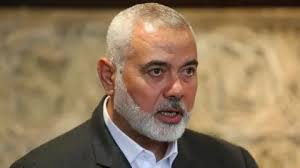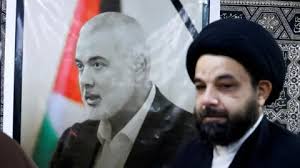Leaders Three of the five senior members of Hamas have been eliminated since the group. Attacked Israel on October 7 2023, according to evidence.
This is how the highest-ranking leaders of Hamas element have faired on the recent past
Yahya Sinwar supervised the 7 October attack in which approximately 1,200 individuals. Were murdered and about 250 others abducted to Gaza as hostages. He was also one of Israel’s biggest threats from that day forward.
Sinwar has been the chief of Hamas in Gaza but has become the supreme commander of Hamas. After the killing of Ismail Haniyeh in Tehran this year, in July.
What has become of him is that he was born in the Gaza Strip. In 1962 and joined the movement at his tender age.
He started the security wing of Hamas, called the Majd, that handles internal matters relating to security. Doings some intelligence work involving alleged agents in place from Israel, and tracking Israeli intelligence and security services.
Sinwar has been arrested by Israel three times. Following his third arrest in 1988, he was received four life terms in prison.
However, he was among 1,027 Palestinian and Israeli Arab prisoners to be released by Israel. In a prisoner exchange deal which saw an Israeli soldier, kidnapped for more than five years by Hamas, released.

Sinwar resumed his leadership in Hamas and was appointed chief of the its political bureau in the Gaza Strip in 2017.
In 2015 the US added Sinwar to its list of “global terrorists”.
What Has Happened to Its Most Prominent Leaders?
Hamas is the Palestinian Islamist organisation that has suffered internal tensions and killed. Leaders over the past years especially in its confrontation with Israel. Having been declared a terrorist organization by many countries including the United States. And countries under European union, Hamas leaders have most of the time. Been on the receiving end in the continuing use of force exercise by Palestinians to try and achieve their sovereignty and, or, state.

Key Leaders and Their Fates
- Sheikh Ahmed Yassin: Formerly paralyzed, Yassin was one of the founding fathers of Hamas and was assassinated by an Israeli air strike in 2004. His death was a turning point in the organization’s affair while signifying that Israel could easily get rogue actors who planned to perpetrate heinous crimes.
- Abdel Aziz al-Rantisi: After the”assassination of Yassin, al-Rantisi of Hamas emerged as the overall leader of the group in the Gaza Strip. Another one also met his maker in an Israeli strike, missile this time, in the immediate aftermath of Yassin’s assassination. His assassination also serves an example of the threats that were facing Hamas leaders and the continued mixture of both side.
- Ismail Haniyeh: Currently, Haniyeh is political leader of Hamas and has successfully navigate through many attempts at his life while being the head of the Palestinian Authority as Prime Minister. He has been sticking to his executive power in managing internal Palestinian political environment and dealing external forces.
Implications for Hamas
It is noteworthy to the overall theme of this paper that the annihilation of considerable leaders poses numerous consequences to Hamas. Every killing results to a leadership void, and aforementioned, this heeds to internal strife and change of tactics. The organization remains to achieve military goals while addressing the political concerns and all these are done under the watch of the international community.
Several problems affect Hamas’s leadership such as regional diplomacy relations with neighboring countries and regional or international change in perception concerning the Palestinian-Israel conflict. The passing on of key individuals may also affect the recruitment and morale within the organization and then slow the operations and support base of the company.
Conclusion
The story of the leaders of Hamas still continues, with the unlimited confrontation of two parties of the Palestinian-Israeli conflict. The organization is in a process of searching for identity and its activities occur in the political environment where armed conflict is complemented by negotiations for power and recognition. The extent to which Hamas will continue to survive and change in all these challenges make it possible to predict its future role in the Palestinian Politics and its relationship with the rest.
Frequently Asked Question (FAQS)
What is Hamas?
Hamas is a Palestinian Islamist political and militant organization founded in 1987. It seeks to establish an Islamic state in historic Palestine and is known for its armed resistance against Israel.
2. What are the main goals of Hamas?
Hamas’s objectives are to dismantle Israeli occupation, gain Palestinian statehood and an Islamic state rule in Palestine. It also offers the Palestinian people social services as well as welfare services.
4. How does Israel respond to Hamas leadership?
Hamas leaders regularly become specific objectives of the Israeli operations as the state perceives them as the main planners and initiators of attacks against Israeli civilians and persons.
5. What impact do the deaths of Hamas leaders have on the organization?
Extermination of leaders has multiple effects on Hamas such as stratification, change of plans, impacts on encouraging and demoralizing its supporters. It can also disrupt the internal governance system of organizations since individuals’ functional specializations make their behavior hard to predict.
How does Hamas differ from the Palestinian Authority (PA)?
Hamas is an Islamic resistance movement and the PA is a secular political authority that emerged from Oslo accords. The two are totally opposites they rarely see eye to eye most of the time.